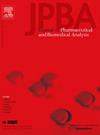药代动力学生物分析方法的交叉验证:实验和统计设计
IF 3.1
3区 医学
Q2 CHEMISTRY, ANALYTICAL
Journal of pharmaceutical and biomedical analysis
Pub Date : 2024-09-24
DOI:10.1016/j.jpba.2024.116485
引用次数: 0
摘要
药物代谢动力学 (PK) 分析是药物开发不可或缺的一部分。卫生机构指南为在一个实验室运行的 PK 生物分析方法提供了开发和验证建议。然而,随着药物开发项目的进展,PK 生物分析方法可能需要在一个以上的实验室中运行。此外,在药物开发周期中,PK 生物分析方法的格式可能会发生变化,新的方法平台可能会得到验证和实施。在此,我们将介绍交叉验证策略,用于比较在同一研究或不同研究中生成 PK 数据的两种经过验证的生物分析方法。目前的交叉验证指导非常有限,因此基因泰克公司开发了一种交叉验证实验策略,利用产生的样本进行综合统计分析。根据研究中浓度水平的四个四分位数 (Q),在适用浓度范围内选择 100 个产生的研究样本。用两种生物分析方法对样本进行一次化验。根据预先规定的可接受性标准,对这 100 个样本进行生物分析方法等效性评估:如果 90% 置信区间 (CI) 上限和下限的百分比差异均在±30%以内,则认为两种方法等效。可能还需要使用相同的标准进行四分位浓度分析。还可绘制样本浓度百分比差与各样本平均浓度的布兰-阿尔特曼图,以帮助进一步确定数据的特征。该策略是对 PK 生物分析方法等效性的可靠评估,包括按浓度进行分组分析,以评估偏差。该策略在两个案例研究中实施:1)两个不同的实验室使用相同的生物分析方法;2)生物分析方法平台从酶联免疫吸附测定法(ELISA)改为多重免疫亲和(IA)液相色谱串联质谱法(IA LC-MS/MS)。本文章由计算机程序翻译,如有差异,请以英文原文为准。
Cross validation of pharmacokinetic bioanalytical methods: Experimental and statistical design
Pharmacokinetic (PK) analysis is an integral part of drug development. Health agency guidance provides development and validation recommendations for PK bioanalytical methods run in one laboratory. However, as a drug development program progresses, a PK bioanalytical method may need to be run in more than one laboratory. Additionally, a PK bioanalytical method format may change and a new method platform may be validated and implemented during the drug development cycle. Here we describe the cross validation strategy for comparisons of two validated bioanalytical methods used to generate PK data within the same study or across different studies. Current guidance for cross validations is limited and, therefore, Genentech, Inc. has developed a cross validation experimental strategy that utilizes incurred samples along with a comprehensive statistical analysis. One hundred incurred study samples over the applicable range of concentrations are selected based on four quartiles (Q) of in-study concentration levels. The samples are assayed once in the two bioanalytical methods. Bioanalytical method equivalency is assessed for the 100 samples based on pre-specified acceptability criterion: the two methods are considered equivalent if the percent differences in the lower and upper bound limits of the 90 % confidence interval (CI) are both within ±30 %. Quartile by concentration analysis using the same criterion may also need to be performed. A Bland-Altman plot of the percent difference of sample concentrations versus the mean concentration of each sample is also created to help further characterize the data. This strategy is a robust assessment of PK bioanalytical method equivalency and includes subgroup analyses by concentration to assess for biases. This strategy was implemented in two case studies: 1) two different laboratories using the same bioanalytical method and 2) a bioanalytical method platform change from enzyme-linked immunosorbent assay (ELISA) to multiplexing immunoaffinity (IA) liquid chromatography tandem mass spectrometry (IA LC-MS/MS).
求助全文
通过发布文献求助,成功后即可免费获取论文全文。
去求助
来源期刊
CiteScore
6.70
自引率
5.90%
发文量
588
审稿时长
37 days
期刊介绍:
This journal is an international medium directed towards the needs of academic, clinical, government and industrial analysis by publishing original research reports and critical reviews on pharmaceutical and biomedical analysis. It covers the interdisciplinary aspects of analysis in the pharmaceutical, biomedical and clinical sciences, including developments in analytical methodology, instrumentation, computation and interpretation. Submissions on novel applications focusing on drug purity and stability studies, pharmacokinetics, therapeutic monitoring, metabolic profiling; drug-related aspects of analytical biochemistry and forensic toxicology; quality assurance in the pharmaceutical industry are also welcome.
Studies from areas of well established and poorly selective methods, such as UV-VIS spectrophotometry (including derivative and multi-wavelength measurements), basic electroanalytical (potentiometric, polarographic and voltammetric) methods, fluorimetry, flow-injection analysis, etc. are accepted for publication in exceptional cases only, if a unique and substantial advantage over presently known systems is demonstrated. The same applies to the assay of simple drug formulations by any kind of methods and the determination of drugs in biological samples based merely on spiked samples. Drug purity/stability studies should contain information on the structure elucidation of the impurities/degradants.

 求助内容:
求助内容: 应助结果提醒方式:
应助结果提醒方式:


